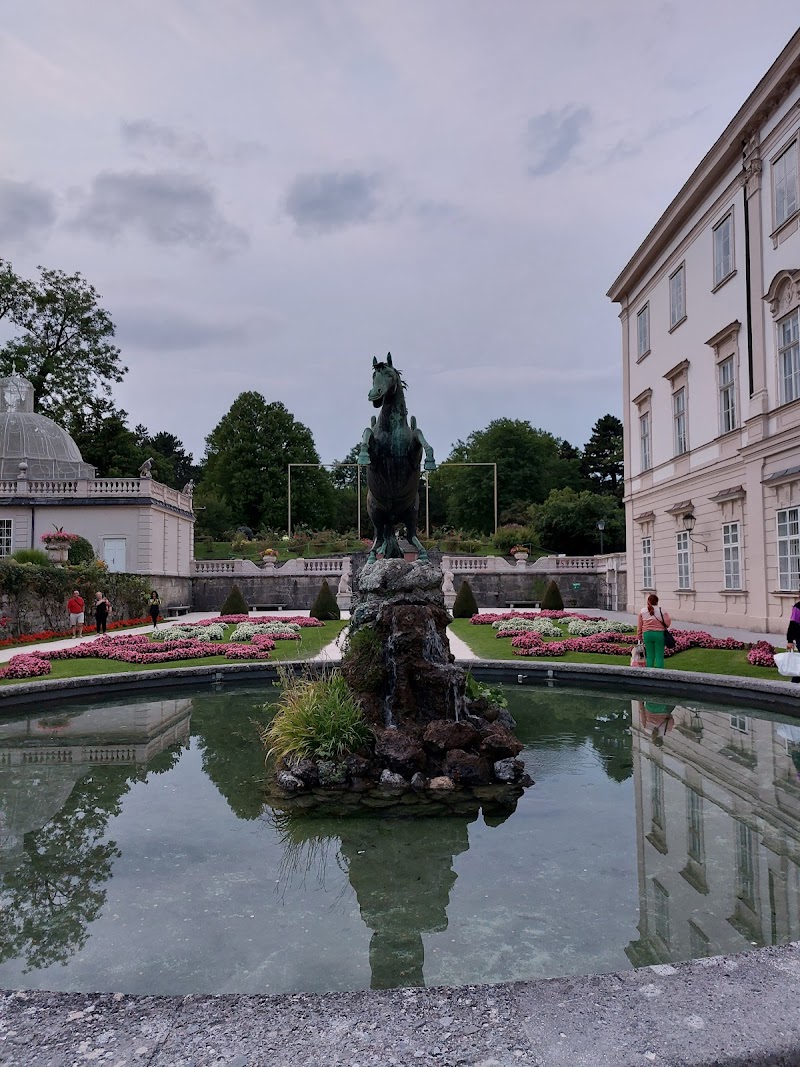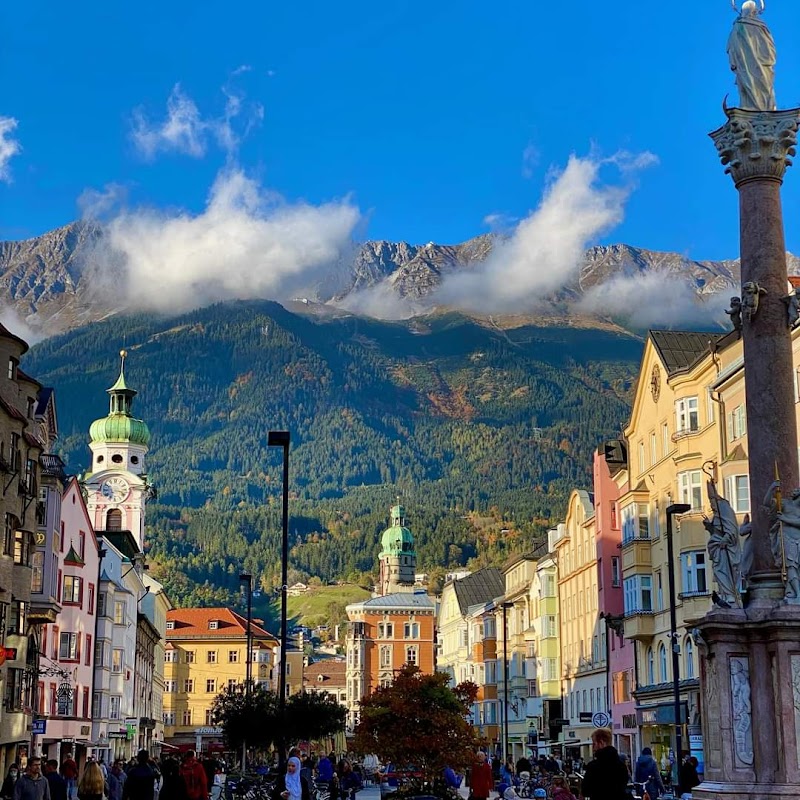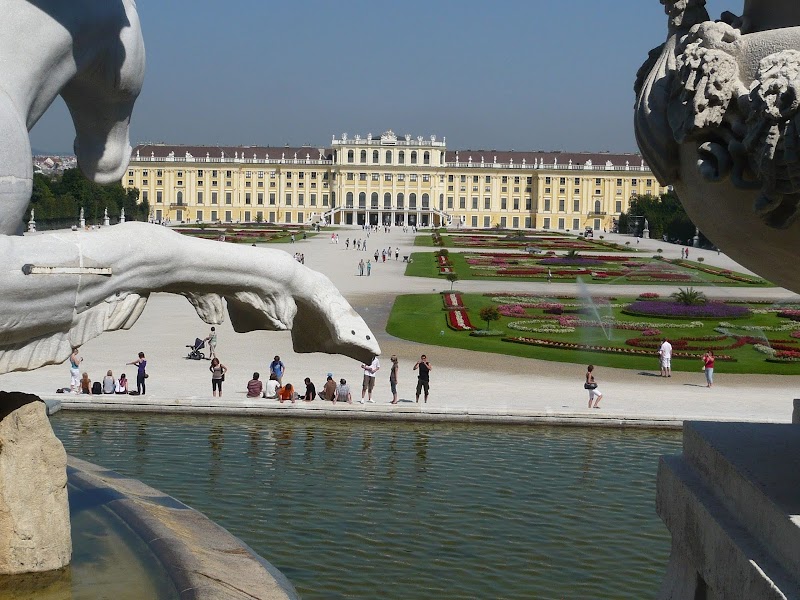Did you know that Austria, an enchanting country known for its remarkable landscape that consists of over 60% mountains, is also home to eight UNESCO World Heritage Sites? Austria's allure lies in its diverse attractions, from the timeless elegance of Vienna's palaces, the captivating rhythm of Salzburg, to the awe-inspiring peaks of the Austrian Alps. Indeed, Austria is a veritable treasure trove of cultural and natural wonders waiting to be discovered.
As you prepare to embark on your Austrian adventure, let our meticulously curated tourist map guide you through Austria's picturesque towns, mesmerizing landscapes, and significant heritage sites. This map is more than just a navigational tool; it's a canvas of your forthcoming adventure that will soon transform into a cherished keepsake brimming with fond memories.
Exploring Austria: What to See and Do
Traveling to Austria feels like stepping into a grand symphony, where the harmonious blend of nature and culture creates a tranquil yet thrilling atmosphere. Each region offers a unique melody, from the pulsating rhythm of its vibrant cities to the serene whispers of its tranquil landscapes. Let's set off to explore some of Austria's lesser-known yet equally enchanting attractions and experiences. You can also explore other European destinations like the picturesque landscapes of Germany or the majestic mountains of Switzerland.
Discover the Austrian Wine Culture in the Wachau Valley
Nestled between quaint towns and rolling vineyards along the Danube River, the Wachau Valley offers a charming exploration of Austria's flourishing wine culture. Renowned for its Riesling and Grüner Veltliner wines, the region invites you to savor the taste of unique local grapes surrounded by splendid views. Pairing these delightful wines with regional delicacies in a traditional Heuriger (wine tavern) offers a sensory experience that is truly captivating.
Immerse Yourself in the Art World of Vienna
Vienna, Austria's proud capital, is much more than its grand palaces. It boasts a vibrant art scene, teeming with galleries, museums, and public art installations that echo every stage of the city's rich cultural history. The Museum Quarter, home to the Leopold Museum and the MUMOK, is a must-visit for connoisseurs of modern art. Here, the provocative works of Egon Schiele and the abstract masterpieces of Pablo Picasso hold center stage. Step outside, and you'll be greeted by the colorful graffiti at the Donaukanal, a testament to Vienna's dynamic street art scene.
Experience Traditional Austrian Life in Bregenzerwald
For a nostalgic journey back in time, venture to Bregenzerwald in Vorarlberg. This charming region is a living testament to Austria's age-old traditions, where values of simplicity and sustainability still thrive. Immerse yourself in the local culture by staying in a traditional wooden farmhouse, joining a cheese-making workshop, or simply wandering through the forested trails. Sharing boundaries with Lake Constance, Bregenzerwald also offers a delightful contrast of alpine landscapes and serene lakeside views. For a similar experience, you can check out the traditional life in Bavaria.
Unearth the Underground Wonders of Eisriesenwelt
Embark on a subterranean adventure in Eisriesenwelt, the world's largest ice cave. The ethereal beauty of its icy stalactites and stalagmites, illuminated against the cave's dark depths, creates an otherworldly spectacle. Located in Werfen, merely a stone's throw away from Salzburg's musical allure, this natural wonder presents a thrilling diversion. Remember to dress warmly, as temperatures inside this colossal ice fortress remain below freezing, even during summer!
Stroll Along Graz's Architectural Timeline
Experience a journey through architectural history in Graz, Austria's second-largest city. From medieval structures like the Grazer Schlossberg and Renaissance courtyards to futuristic edifices like the Kunsthaus (Graz Art Museum), Graz's cityscape is an open history book. Each era has left its indelible mark, creating a fascinating blend of styles. Don't miss the opportunity to appreciate this architectural harmony from the vantage point of Schlossberg hill.
Remember, Austria is a country of diversity and contrast, where every region holds its unique charm. Whether you're a wine aficionado, an art enthusiast, a culture buff, or a nature lover, Austria awaits you with a plethora of hidden gems ready to be discovered.

Booking.com
Practical Information for Traveling in Austria
Transportation and Mobility
Austria is incredibly accessible, thanks to its efficient and extensive public transportation system. Trains, buses, and trams are operated by ÖBB (Österreichische Bundesbahnen) and offer frequent services across towns and cities. For more remote areas, PostBus services are your best bet. Remember to validate your ticket before boarding to avoid heavy fines.
If driving is more your style, bear in mind that Austria employs a 'vignette' system for its motorways. You can purchase a vignette at border crossings, petrol stations, or online. Make sure it's clearly visible on your windshield to evade any penalties.
Schedules and Prices
Public transportation operates on varying schedules depending on the day of the week and the season. Most services commence early, around 5 AM, and operate until midnight. Night buses are available in major cities like Vienna and Salzburg. Always check the timetables at the stations or use the ÖBB app for the most current schedules.
A single ticket in Vienna is priced at €2.40, while a 24-hour pass costs €8. If you're planning on extensive travel, the ÖBB Vorteilscard, which provides a 50% discount on standard fares nationwide, could be a savvy choice. Prices range from €19 for youths to €66 for adults.
Safety Tips
Austria is considered one of the safest countries in the world, but it's still wise to exercise general caution. Be vigilant of your belongings in crowded places and avoid venturing alone late at night in unfamiliar areas. In winter, pay heed to avalanche warnings in mountainous regions and equip your car with winter tyres.
Practical Recommendations
The ideal time to visit Austria hinges on your interests. If skiing is your passion, the Austrian Alps transform into a winter wonderland from December to March. For sightseeing and outdoor activities, the weather is most agreeable from April to June and September to October. Remember that many attractions might have shorter opening hours or be closed outside the peak tourist season.
Ensure you carry some cash as not all places accept credit cards, especially in rural areas. Additionally, while Austrians generally speak good English, learning a few basic phrases in German can help you connect better with the locals.

Frequently Asked Questions about Austria
1. Are there any specific rules for outdoor activities in Austria's national parks?
Respecting the rules of Austria's national parks is crucial to preserving their beauty and biodiversity. Activities such as hiking, biking, and bird-watching are generally encouraged, but certain restrictions apply. For instance, off-trail hiking is typically not permitted to protect plant species. Similarly, camping is only allowed in designated areas. Always check the specific regulations of each park before your visit.
2. What are some Austrian culinary specialties that I shouldn't miss?
Exploring Austria's culinary landscape is an adventure in itself. From hearty main dishes to scrumptious desserts, there's a myriad of flavors waiting to be savored. Besides the globally renowned Wiener Schnitzel, make sure to sample Tafelspitz, a boiled beef dish traditionally served with apple and horseradish sauces. For a sweet indulgence, don't miss out on Apfelstrudel or Sachertorte. Finally, experience the unique taste of Austrian beverages such as Sturm, a semi-fermented grape juice available only in the fall.
3. Is it customary to tip in restaurants and cafés in Austria?
Tipping is customary in Austria, and it's generally expected to leave a small gratuity in restaurants and cafés. Typically, you would round up the bill to the nearest euro, or add about 5-10% for excellent service. However, tipping is not obligatory, and you should feel comfortable giving what you deem appropriate based on the quality of service.
4. What are some unique shopping experiences in Austria?
Austria offers a delightful range of shopping experiences, from traditional markets to contemporary designer boutiques. Try visiting Naschmarkt in Vienna for a vibrant array of fresh produce, international foods, and local specialties. For a more traditional shopping experience, explore the Christmas markets during winter, where you can find handmade crafts, local delicacies, and festive decorations. If you're on the lookout for high-quality, locally made souvenirs, consider purchasing Austrian ceramics, glassware, or traditional Trachten clothing.
5. What is the best way to enjoy Austria's music scene?
Austria's music scene is impressively diverse, featuring everything from classical concerts to electrifying modern music festivals. Vienna, fondly known as the City of Music, hosts the Vienna State Opera and is home to the historic Musikverein concert hall. Salzburg, Mozart's birthplace, holds the famous Salzburg Festival every summer. For fans of contemporary music, don't miss the Nova Rock and Electric Love festivals. Always check the schedules in advance and secure your tickets.
6. How can I learn more about Austria's historical and cultural heritage?
Delving deeper into Austria's rich cultural heritage is possible by visiting its numerous museums and historical sites. The Kunsthistorisches Museum in Vienna houses an extensive collection of artworks, while the Museum of Military History offers insights into the country's past conflicts. For an immersive experience, try attending local festivals and events that showcase traditional Austrian culture, such as the Almabtrieb cattle drive or the vibrant Fasching carnival.

